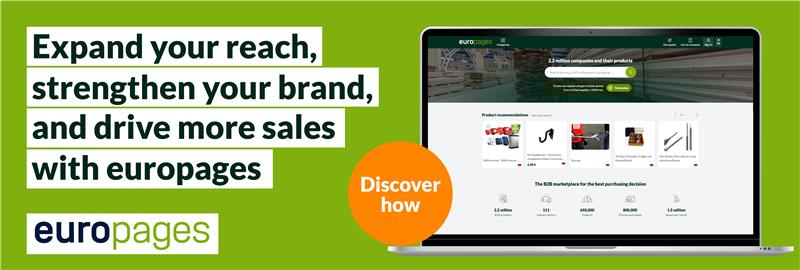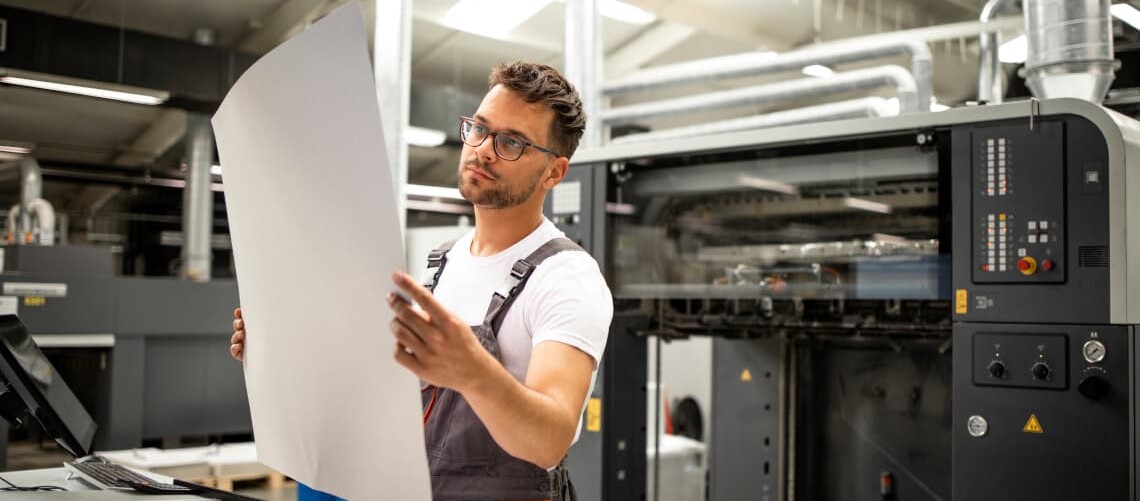Table of content
- Printing Paper Basics: Finish, Coating and Use
- Paper Weight: Striking the Right Balance
- Optimizing Paper Sizes for Efficiency and Less Waste
- Pro-Tip
- Green Paper for a Sustainable Workplace
- Conclusion
1. Printing Paper Basics: Finish, Coating and Use
Choosing the right printing paper doesn’t have to be complicated, but it’s good to know the basics to make smart decisions for your business.
Here are some key things to consider:
- Finish: This is how the surface of the paper feels and looks. Smooth paper is great for professional documents, while textured or embossed paper is better for special uses like invitations or creative projects.
- Coating: Coated paper has a layer (like clay) that makes it smoother and better for printing high-quality images. It’s ideal for things like brochures and presentations where you want colors to pop. Uncoated paper is more common for everyday tasks like printing internal documents or invoices.
- Intended Use: Different papers are designed for different jobs. For example, some work better with inkjet printers, laser printers or for long-term storage.
Uncoated paper is your go-to for regular office work—it’s budget-friendly and works well for memos, drafts, and reports. If you want your printed materials to stand out, like a brochure or a presentation, coated paper gives a sharper, more polished look.
Picking the right paper type helps you get the job done right while also saving time, money, and resources.
2. Paper Weight: Striking the Right Balance
The paper weight, measured in grams per square meter (gsm), affects how your printed materials look, feel and perform. A flimsy sheet will not convey the quality you want for a client presentation, while an overly thick stock for internal documents is unnecessary and wasteful.
Consider these general guidelines for choosing the right paper weight:
- Letterheads and business cards: 100-120 gsm offers a good balance of quality and utility.
- Brochures and marketing materials: 130-170 gsm provides a more substantial feel and increases durability.
- Internal documents: 80 gsm is often enough for internal documents without compromising readability.
Choosing the correct paper weight can also affect your postage costs. Heavier paper adds weight to your mailings, potentially increasing expenses.
3. Optimizing Paper Sizes for Efficiency and Less Waste
Choosing the right paper size might seem like a small thing, but it can make a great difference in how much paper you waste and how efficiently you print.
Sticking with standard sizes like A4 or Letter is usually the best way to go. Most printers are designed to work with those sizes, which means less hassle and fewer problems when you print.
But it’s not just about your printer. How often do you end up cutting down a piece of paper to make it the right size? All those little scraps add up!
If you choose the right paper size from the start and plan out how you’re going to use it, you can avoid wasting paper. There are different options available for your purpose:
- A3 (297 x 420 mm): Twice the size of A4, ideal for posters or folding to A4.
- A5 (148 x 210 mm): Half the size of A4, perfect for leaflets or small brochures.
- A6 (105 x 148 mm): Great for postcards or pocket notebooks.
4. Pro-Tip
The best way to save paper is by not using it. Before printing, ask yourself, "Do I really need a printed copy?" Can I share the document digitally instead?
Encourage others to print less by promoting digital options and making double-sided printing the standard. You can send an email to everyone and add this message to the onboarding presentation for new employees.

5. Green Paper for a Sustainable Workplace
These days, more and more businesses are looking for ways to be environmentally responsible and choosing green paper is a great place to start.
But what exactly does green paper mean? Simply put, it's paper that's produced in a way that minimizes its impact on the environment.
One popular paper type is recycled paper. It is made from old paper like newspapers, magazines, and office paper that would have been thrown away. This saves trees and reduces waste.
Another good option is FSC-certified paper. The FSC (Forest Stewardship Council) makes sure that the paper comes from forests that are well-managed. That means protecting wildlife, respecting the people who live and work in the forest, and ensuring that the forest can continue to thrive.
But there's more to green paper than just recycled and FSC-certified options. Some companies are making paper from alternative fibers like bamboo or hemp, which grow quickly and require fewer resources than traditional trees. You might even find paper made from agricultural byproducts like sugarcane stalks.
6. Conclusion
Choosing the right paper for your business can make work easier and reduce waste, whether for regular office tasks or special projects. Understanding different paper types, weights and sizes helps businesses make smart choices that save money and help the environment.
Despite living in a digital world, paper is still an important part of how we work.
Think of it like this: digital tools are fast and great for sharing information, like sending emails or editing documents online. But printed documents are often simpler to read, mark up and arrange — especially in situations where you need to focus, like meetings, presentations or legal tasks.
Combining digital tools with smarter paper choices allows businesses to create a workplace that’s both efficient and eco-friendly.
This approach offers the following benefits:
- Less Paper Use: Digital tools can take over tasks like note-taking, sharing documents, and internal communication. This means you’ll print less, lowering your overall paper use and supporting sustainable paper options.
- Smarter Printing: When printing is necessary, you can choose eco-friendly options like recycled or FSC-certified paper. Selecting the right paper size and weight can also reduce waste and save resources.
- Connecting Digital and Physical: Paper can link to digital resources. For example, adding QR codes to printed materials or labels can direct people to online content, saving you from printing long documents.
Find Paper Suppliers for Your Project
RBCEO: A family-owned business with 15+ years of experience, specializing in eco-friendly packaging like crinkle paper fillers, silk wrapping papers, paper strings, and Slivv for glass protection.
Nurimar Monti S.L.: Since 1985, Nurimar Monti S.L. has specialized in sustainable, custom paper products, manufacturing everything in-house using locally sourced materials to ensure quality and eco-friendliness.
Europe Print Shop: An Istanbul-based printing service specializing in high-quality paper products such as letterheaded paper, business cards, brochures, flyers, and custom stationery.
Papermar: Specializing in perforated and flat papers for industries like textiles, footwear, and automotive, offering a range of sizes and weights for domestic and international markets.
GRIST99: With over 20 years of experience, GRIST99 near Warsaw offers both sheet-fed offset and digital printing for a wide range of products, serving domestic and international clients with fast, high-quality solutions.
Exonia Packaging: Founded in 2003, Exonia specializes in premium BIO paper packaging for the food and pharma industries, using advanced technology to create sustainable solutions for clients like Coca Cola and Procter & Gamble.

